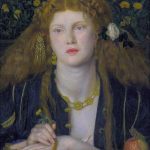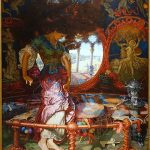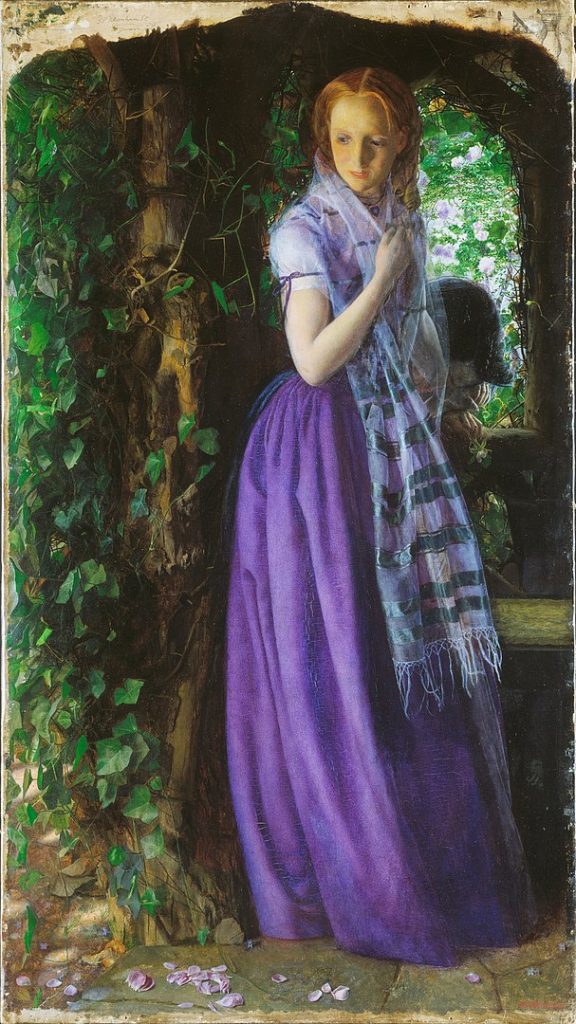
Arthur Hughes, a Victorian painter and illustrator, was born on January 27, 1832, in London, England. His artistic career unfolded during a period of significant social and cultural change, and Hughes’s work encapsulated the spirit of the Pre-Raphaelite Brotherhood, a movement that sought a return to the aesthetic principles of the Italian Renaissance.
As a young artist, Hughes entered the Royal Academy Schools in 1846, where he came into contact with fellow students who shared a disdain for the academic conventions of the time. The Pre-Raphaelite Brotherhood, founded in 1848 by Dante Gabriel Rossetti, John Everett Millais, and William Holman Hunt, sought to reject the prevailing artistic norms and embrace a more detailed, vibrant, and emotionally charged style inspired by early Italian art.
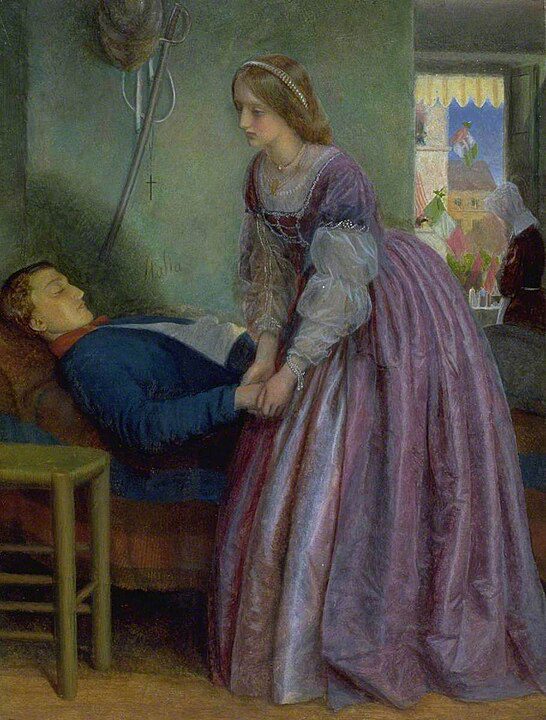
Hughes, though not a formal member of the Brotherhood, was deeply influenced by their ideals. His early works, such as “April Love” (1856), exhibited the Pre-Raphaelite emphasis on meticulous detail, vivid colors, and a focus on symbolism. The painting depicted a poignant scene of unrequited love, capturing the emotional intensity and naturalistic detail characteristic of the movement.
In 1855, Hughes became associated with the Hogarth Club, a gathering of artists and writers including Dante Gabriel Rossetti and William Morris, further immersing himself in the intellectual and artistic currents of the time. His association with Morris, a prominent figure in the Arts and Crafts Movement, influenced Hughes’s later forays into book illustration and decorative arts.
Showcasing talent
Hughes’s illustrations for books, particularly those of Christina Rossetti, showcased his talent for capturing the emotional nuances of the written word. His illustrations for “Sing-Song: A Nursery Rhyme Book” (1872) and “Goblin Market” (1862) by Christina Rossetti demonstrated his ability to create visual narratives that complemented and enriched the literary content.
The theme of childhood and innocence permeated Hughes’s work, reflecting the Victorian fascination with the purity of youth. His paintings often featured children in idyllic settings, such as “Home from Sea” (1862) and “The Long Engagement” (1859), capturing the sentimental and nostalgic qualities cherished by Victorian audiences.
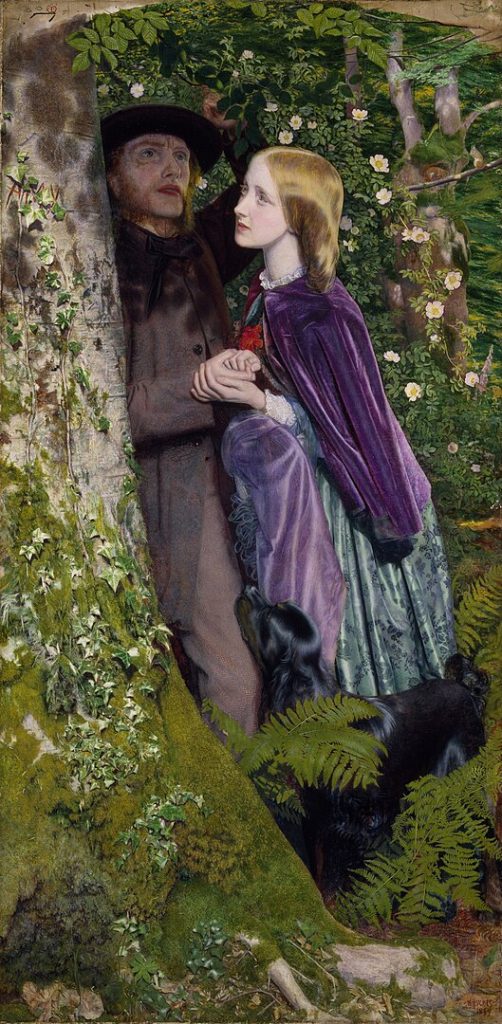
The Pre-Raphaelite Brotherhood’s influence on Hughes extended beyond painting. His collaboration with William Morris on decorative projects, including stained glass and tapestries, underscored his commitment to the ideals of the Arts and Crafts Movement. The emphasis on craftsmanship, simplicity, and a connection to nature aligned with Hughes’s artistic sensibilities.
Hughes’s personal life, marked by the loss of his wife Tryphena in 1863, contributed to the melancholic tone evident in some of his later works. Paintings like “The Mother’s Grave” (1864) and “April Love” (1856) reflect a poignant exploration of themes related to love, loss, and the transient nature of life.
Many subjects
The latter part of Hughes’s career saw him engage with a diverse range of subjects. His landscapes, such as “The Eve of St. Agnes” (1856) and “Oh, What’s That in the Hollow” (1864), demonstrated his ability to evoke mood and atmosphere through meticulous attention to detail and a vivid color palette.
Hughes’s commitment to the ideals of the Pre-Raphaelite Brotherhood persisted, and he continued to exhibit at the Royal Academy and other prominent venues. His contributions to the art world were recognized when he was elected as an Associate of the Royal Academy in 1891.
In addition to his painting and illustration, Hughes wrote poetry, showcasing his multifaceted artistic talents. His poetry often reflected the same themes of love, nature, and introspection found in his visual works. Hughes’s literary pursuits provided a complementary outlet for his creative expression.
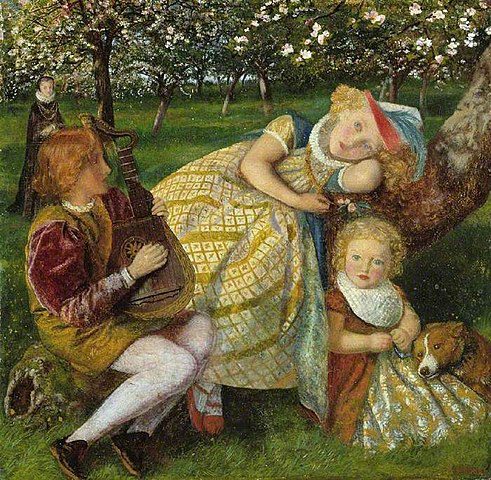
Arthur Hughes’s artistic legacy endured through his impact on the Pre-Raphaelite movement and his contributions to Victorian art and literature. His ability to infuse his works with emotional depth, meticulous detail, and a reverence for nature resonated with audiences of his time and continues to captivate art enthusiasts today. Hughes passed away on December 22, 1915, leaving behind a body of work that reflects the aesthetic and philosophical currents of the Victorian era.


